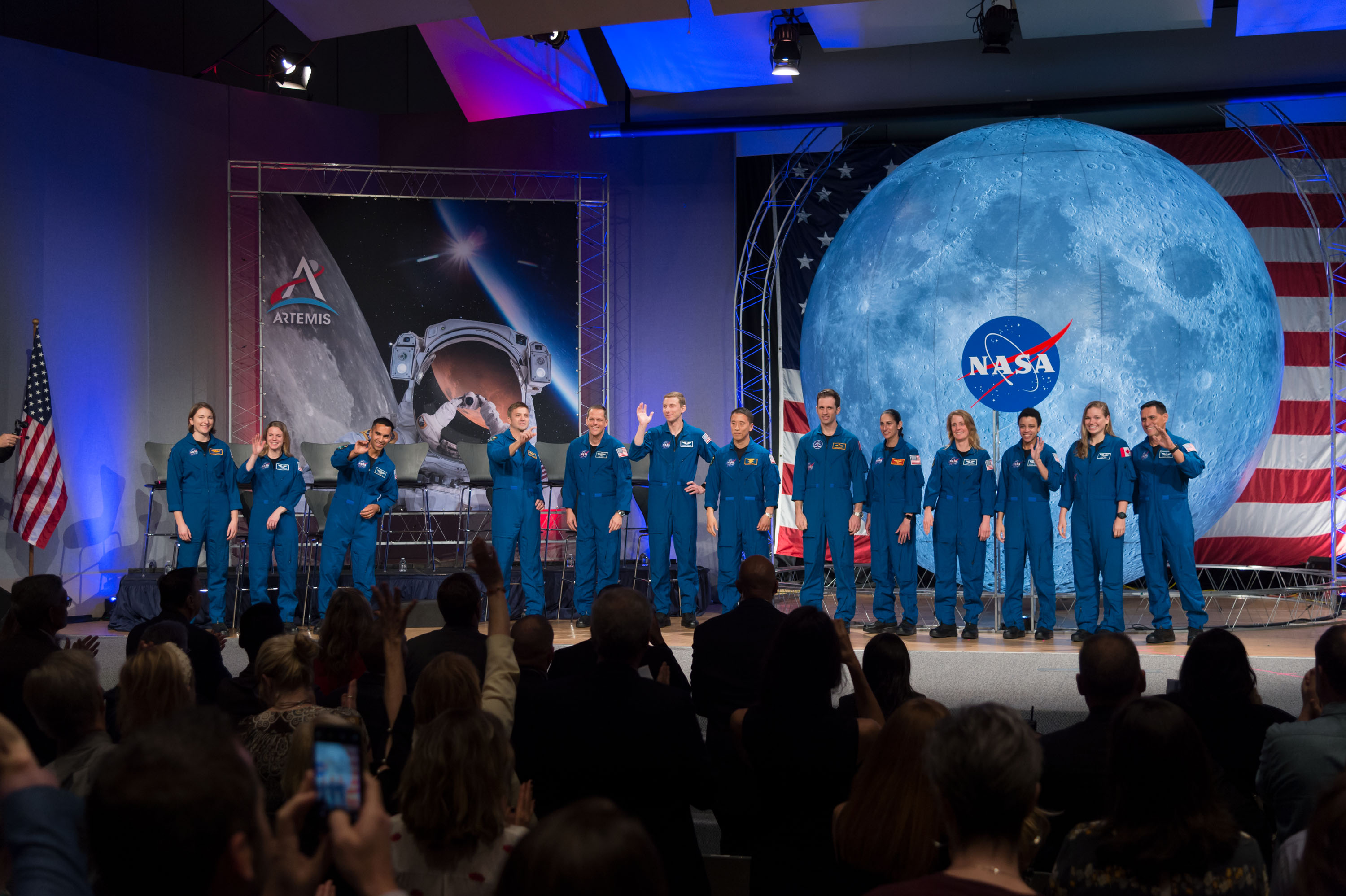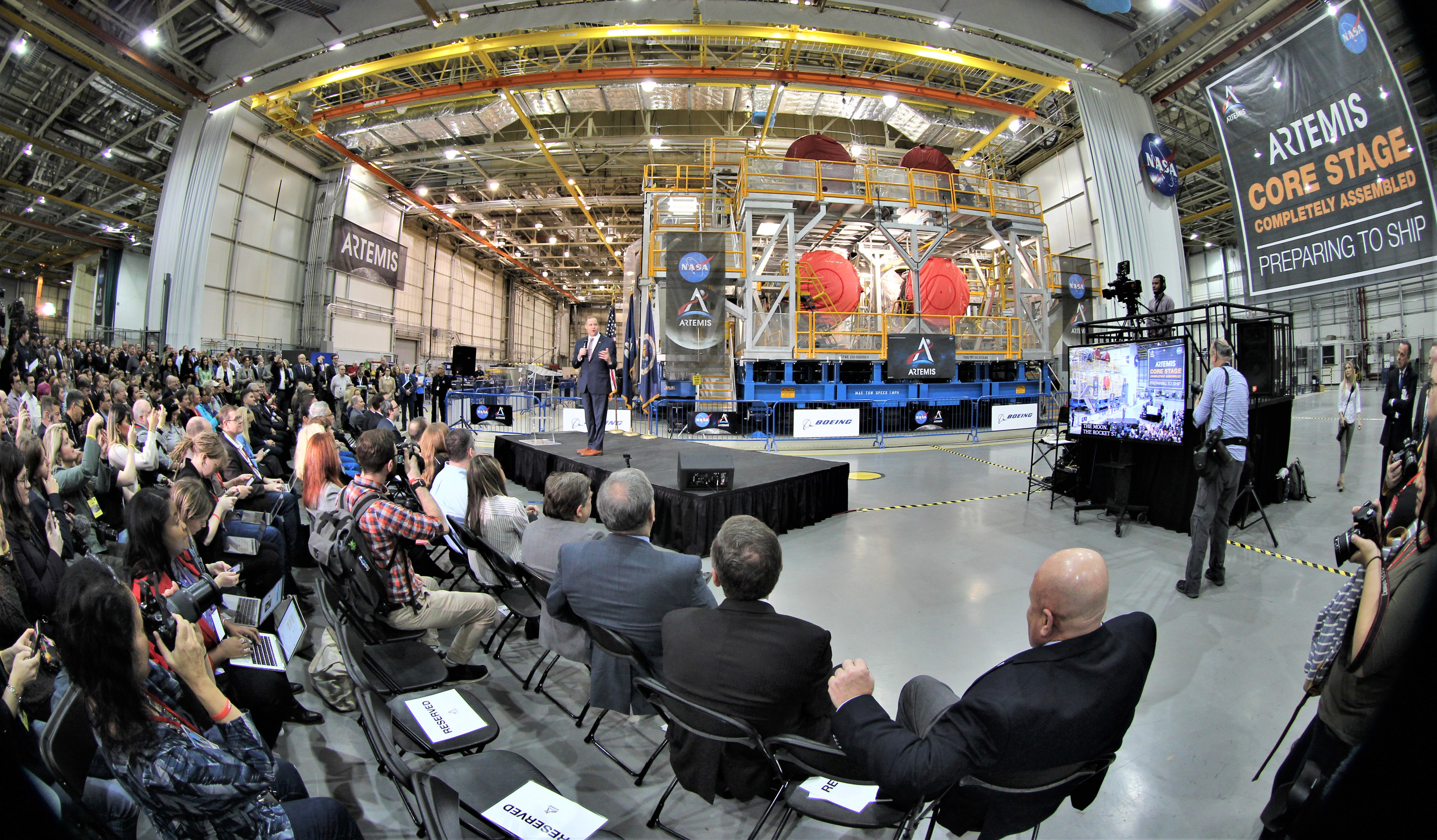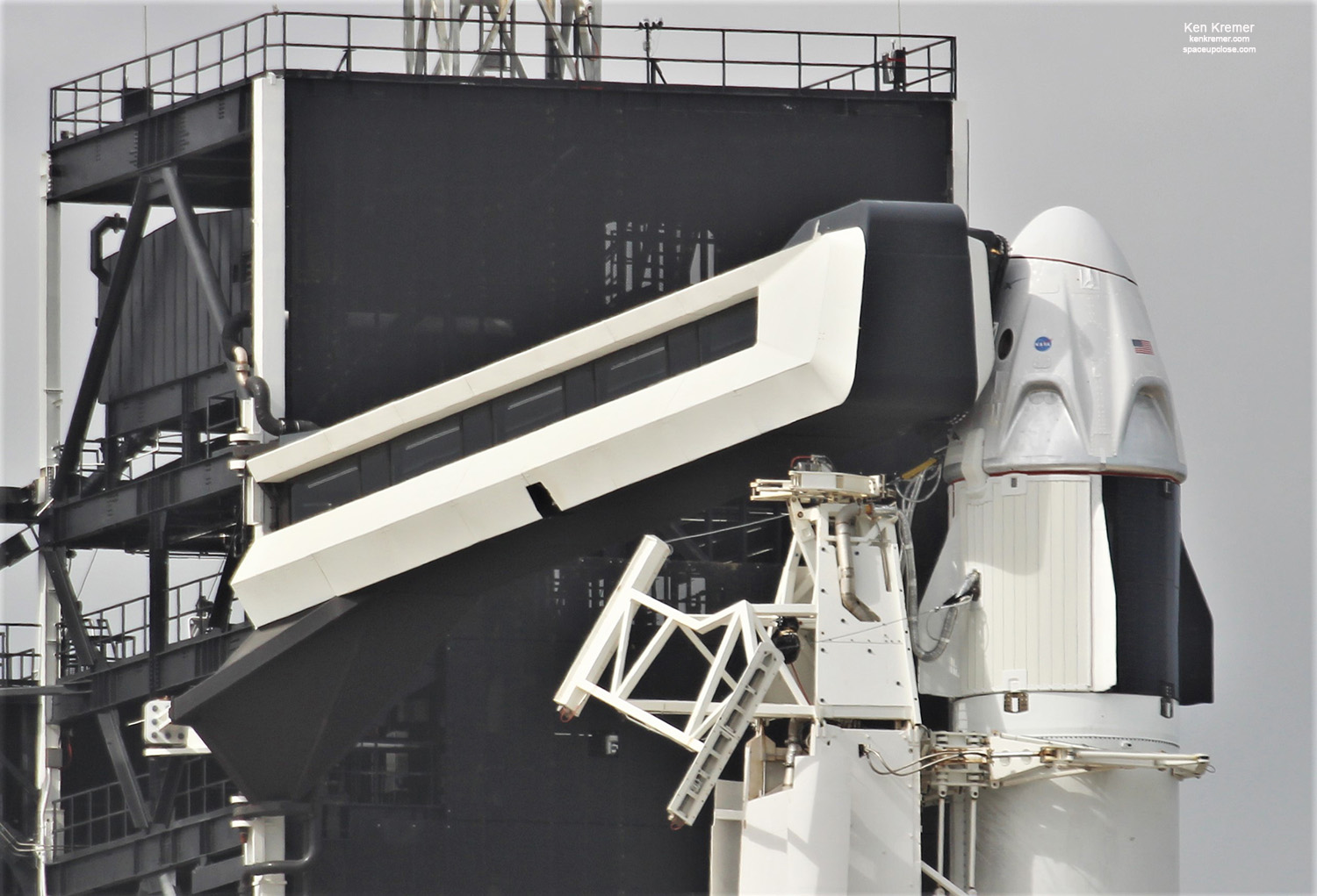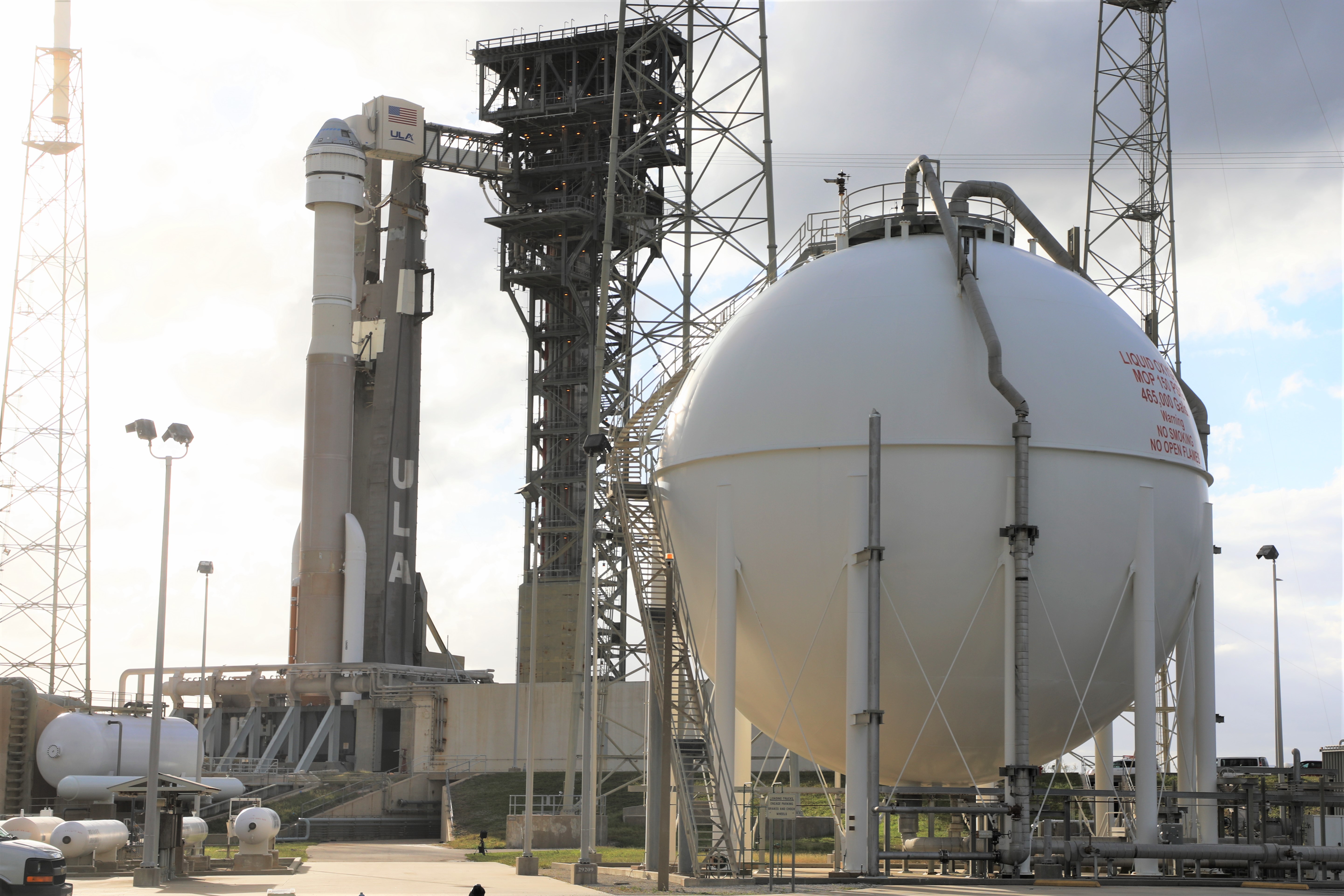 NASA’s new class of astronauts – the first to graduate since the agency announced its Artemis program – appear on stage during their graduation ceremony at the agency’s Johnson Space Center in Houston on Jan. 10, 2020. The class includes 11 NASA candidates, as well as two Canadian Space Agency (CSA) candidates, selected in 2017. They will join the active astronaut corps, beginning careers in exploration that may take them to the International Space Station, on missions to the Moon under the Artemis program, or someday, Mars. Pictured from left are: Kayla Barron of NASA, Zena Cardman of NASA, Raja Chari of NASA, Matthew Dominick of NASA, Bob Hines of NASA, Warren Hoburg of NASA, Jonny Kim of NASA, Joshua Kutryk of CSA, Jasmin Moghbeli of NASA, Loral O’Hara of NASA, Jessica Watkins of NASA, Jennifer Sidey-Gibbons of CSA, and Frank Rubio of NASA. Credits: NASA
NASA’s new class of astronauts – the first to graduate since the agency announced its Artemis program – appear on stage during their graduation ceremony at the agency’s Johnson Space Center in Houston on Jan. 10, 2020. The class includes 11 NASA candidates, as well as two Canadian Space Agency (CSA) candidates, selected in 2017. They will join the active astronaut corps, beginning careers in exploration that may take them to the International Space Station, on missions to the Moon under the Artemis program, or someday, Mars. Pictured from left are: Kayla Barron of NASA, Zena Cardman of NASA, Raja Chari of NASA, Matthew Dominick of NASA, Bob Hines of NASA, Warren Hoburg of NASA, Jonny Kim of NASA, Joshua Kutryk of CSA, Jasmin Moghbeli of NASA, Loral O’Hara of NASA, Jessica Watkins of NASA, Jennifer Sidey-Gibbons of CSA, and Frank Rubio of NASA. Credits: NASA
For SpaceUpClose.com & RocketSTEM
CAPE CANAVERAL, FL – Who amongst you wants to be a NASA astronaut and try out for the only occasionally offered opportunity fly to try out and fly on new human missions of exploration and discovery to the Moon and Mars as part of Project Artemis??
Well NOW is your chance !! Apply to #BeAnAstronaut for the entire of March only !!
For the first time in more than four years, NASA has opened up the astronaut selection process to new space recruits and has began accepting applications as of this week on Monday March 2 for future astronauts.
“Aspiring Moon to Mars explorers have until 11:59 p.m. EDT Tuesday, March 31, to apply,” says NASA.
After that no one ones when the next opportunity arises !!
The last class of astronaut candidates chosen in 2017 just graduated in a ceremony held on Jan. 10, 2020. The class includes 11 NASA candidates, as well as two Canadian Space Agency (CSA) candidates, selected in 2017.
Under Project Artemis NASA plans to send the first woman and the next man to the lunar south pole in 2024 with more missions to follow.
The SLS rocket and Orion deep space capsule are under development.

Astronauts will also continue flying on low Earth orbit mission to the International Space Station aboard the SpaceX Crew Dragon and Boeing Starliner capsules.

So the opportunities for exciting missions are truly boundless!!

Here are the astronaut application details for NASA!
The call for more astronauts comes at a time when the agency is preparing to send the first woman and next man to the Moon with the Artemis program. Exploring the Moon during this decade will help prepare humanity for its next giant leap – sending astronauts to Mars.
U.S. citizens may submit applications to #BeAnAstronaut at:
https://www.usajobs.gov/GetJob/ViewDetails/561186900
“America is closer than any other time in history since the Apollo program to returning astronauts to the Moon. We will send the first woman and next man to the lunar South Pole by 2024, and we need more astronauts to follow suit on the Moon, and then Mars,” said NASA Administrator Jim Bridenstine. “We’re looking for talented men and women from diverse backgrounds and every walk of life to join us in this new era of human exploration that begins with the Artemis program to the Moon. If you have always dreamed of being an astronaut, apply now.”
NASA expects to select final astronaut candidates in mid-2021 to begin training as the next class of Artemis Generation astronauts. When the agency last sought astronaut candidates, in late 2015, a record-breaking 18,300 people applied. After more than two years of intensive training, 11 new astronauts selected from that pool graduated earlier this year in the first public graduation ceremony the agency has hosted.
“Becoming an astronaut is no easy task, because being an astronaut is no easy task,” said Steve Koerner, NASA’s director of flight operations and chair of the Astronaut Selection Board at NASA’s Johnson Space Center in Houston. “Those who apply will likely be competing against thousands who have dreamed of and worked toward going to space for as long as they can remember. But somewhere among those applicants are our next astronauts, and we look forward to meeting you.”
Since the 1960s, NASA has selected 350 people to train as astronaut candidates for its increasingly challenging missions to explore space. With 48 astronauts in the active astronaut corps, more will be needed to serve as crew aboard spacecraft bound for multiple destinations and propel exploration forward as part of Artemis missions and beyond.
The basic requirements to apply include United States citizenship and a master’s degree in a STEM field, including engineering, biological science, physical science, computer science, or mathematics, from an accredited institution. The requirement for the master’s degree can also be met by:
• Two years (36 semester hours or 54 quarter hours) of work toward a Ph.D. program in a related science, technology, engineering or math field;
• A completed doctor of medicine or doctor of osteopathic medicine degree;
• Completion (or current enrollment that will result in completion by June 2021) of a nationally or internationally recognized test pilot school program. However, if test pilot school is your only advanced degree, you must also have a bachelor’s degree or higher in a STEM field.
Candidates also must have at least two years of related, progressively responsible professional experience, or at least 1,000 hours of pilot-in-command time in jet aircraft. Astronaut candidates must pass the NASA long-duration spaceflight physical.
As part of the application process, applicants will, for the first time, be required to take an online assessment that will require up to two hours to complete.
After completing training, the new astronauts could launch on American rockets and spacecraft — developed for NASA’s Commercial Crew Program — to live and work aboard the International Space Station, 250 miles above Earth. There they will take part in experiments that benefit life at home and prepare us for the Moon and Mars.
They also may launch on NASA’s powerful new Space Launch System rocket and Orion spacecraft, docking at the Gateway in lunar orbit before taking a new human landing system to the Moon’s surface. After returning humans to the Moon in 2024, NASA plans to send astronauts to the lunar surface once per year on expeditions and establish sustainable lunar exploration by 2028. Gaining new experiences on and around the Moon will prepare NASA to send the first humans to Mars in the mid-2030s.
For more information about a career as a NASA astronaut, and application requirements, visit:
http://www.nasa.gov/astronauts
…………..
Watch Ken’s continuing reports onsite for live reporting of SpaceX CRS-20 as well as upcoming and recent ULA and SpaceX launches including Crew and Cargo Dragon, Solar Orbiter, In-Flight Abort and Starlink at the Kennedy Space Center and Cape Canaveral Air Force Station.
Stay tuned here for Ken’s continuing Earth and Planetary science and human spaceflight news: www.kenkremer.com –www.spaceupclose.com – twitter @ken_kremer – email: ken at kenkremer.com
Dr. Kremer is a research scientist and journalist based in the KSC area, active in outreach and interviewed regularly on TV and radio about space topics.
………….
Ken’s photos are for sale and he is available for lectures and outreach events
Ken has created hundreds of widely published Mars rover mosaics and lectures also about NASA’s Mars rovers
Ken’s upcoming outreach events:
Mar 4-5: 7 PM, Quality Inn Kennedy Space Center, Titusville, FL. “SpaceX CRS-20, IFA and Starlink launch, ULA Solar Orbiter launch.” Free. In hotel lobby. Photos for sale




